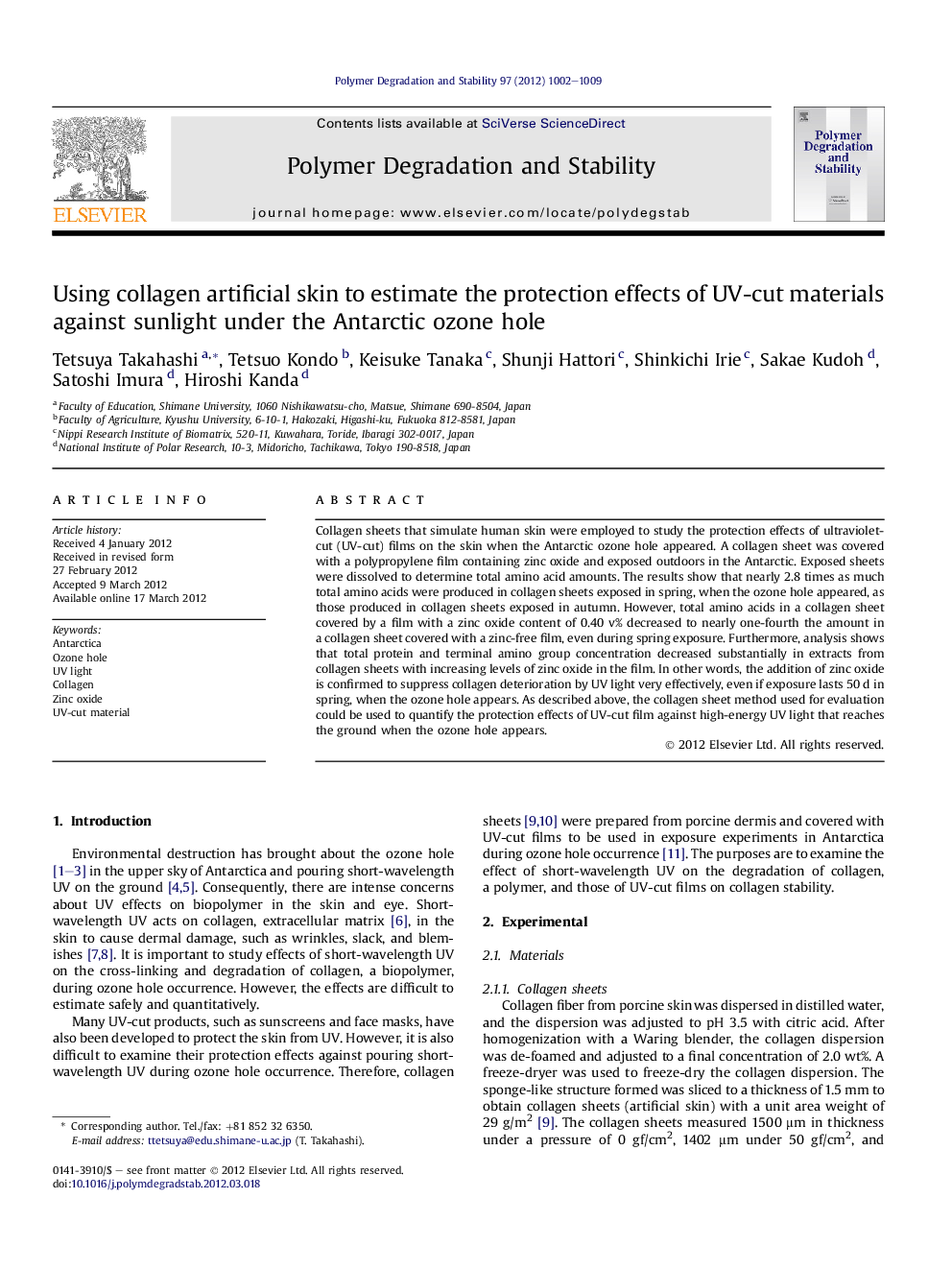| Article ID | Journal | Published Year | Pages | File Type |
|---|---|---|---|---|
| 5202811 | Polymer Degradation and Stability | 2012 | 8 Pages |
Abstract
Collagen sheets that simulate human skin were employed to study the protection effects of ultraviolet-cut (UV-cut) films on the skin when the Antarctic ozone hole appeared. A collagen sheet was covered with a polypropylene film containing zinc oxide and exposed outdoors in the Antarctic. Exposed sheets were dissolved to determine total amino acid amounts. The results show that nearly 2.8 times as much total amino acids were produced in collagen sheets exposed in spring, when the ozone hole appeared, as those produced in collagen sheets exposed in autumn. However, total amino acids in a collagen sheet covered by a film with a zinc oxide content of 0.40Â v% decreased to nearly one-fourth the amount in a collagen sheet covered with a zinc-free film, even during spring exposure. Furthermore, analysis shows that total protein and terminal amino group concentration decreased substantially in extracts from collagen sheets with increasing levels of zinc oxide in the film. In other words, the addition of zinc oxide is confirmed to suppress collagen deterioration by UV light very effectively, even if exposure lasts 50Â d in spring, when the ozone hole appears. As described above, the collagen sheet method used for evaluation could be used to quantify the protection effects of UV-cut film against high-energy UV light that reaches the ground when the ozone hole appears.
Related Topics
Physical Sciences and Engineering
Chemistry
Organic Chemistry
Authors
Tetsuya Takahashi, Tetsuo Kondo, Keisuke Tanaka, Shunji Hattori, Shinkichi Irie, Sakae Kudoh, Satoshi Imura, Hiroshi Kanda,
